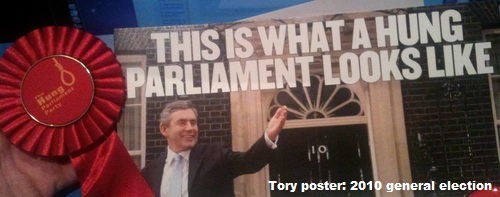David Herdson asks: “How many Tories will vote Yes?”

Might AV work to their advantage?
Politics often boils down to a mixture of high principle and low expediency or interest. The debate on voting reform has long been a classic example of the sort. It is hardly coincidental that all three main parties have produced principled arguments that just happen to support a voting system that is particularly favourable to them.
One 1997 election promise that Labour were open about not keeping was their proposed referendum on voting reform. Eighteen years of opposition makes you take reform seriously; winning a 177-seat majority returns it to the backburner. By contrast, the Lib Dems have been very keen on STV – a system likely to impose a sufficiently high barrier to keep minority representation to a minimum but which is beneficial to centrist parties polling in the mid-teens and above.
Likewise, the Conservatives were believed to benefit – both by themselves and by their opponents – under FPTP from a split centre-left vote. That might well have been true in the 1980s, though tactical voting during the Blair years minimised and possibly reversed it.
As with so much else, the formation of the Coalition might overturn these old assumptions. The centre-left vote is largely solid behind Labour while it’s the centre/centre-right vote that’s split. Even more pertinently, the notion that the Lib Dems would always back Labour in the Commons has been demonstrated to be very much false.
The lazy lumping of the Lib Dem vote with that of Labour to form a centre-left total was always questionable – some part of the Lib Dems was always more inclined to the Conservatives, albeit generally a smallish one. However, the remaining Lib Dem vote now tends heavily towards the Conservatives (the YouGov poll this Tuesday revealed a preference among Lib Dems for the Conservatives under Cameron over Labour under Miliband by more than 4:1). Even so, Ed Miliband remains committed to campaigning for the change and David Cameron against it
The Oldham East & Saddleworth byelection provided plenty more evidence of a willingness of the change in voters’ tactical behaviour, with a clear swinging of a large portion of the Tory vote behind the Lib Dem candidate.
Nor is it just the three big parties in play. The transferred votes of UKIP, the Greens and BNP will matter at the margins, and of these, UKIP would probably be favourable, the Greens not so (unless indirectly via electing Lib Dem coalition partners), and the BNP anyone’s guess.
And yet the Tory vote remains probably set in favour of FPTP. Certainly the party leadership and membership does. The polls vary wildly: YouGov – with bespoke wording – consistently reports a split of around 25-58 against, Angus Reid has Yes and No almost neck-and-neck with the blues, and ComRes reports the break to be 24-43.
Will that change? The main argument against AV – that it leads to hung parliaments and so weaker government – becomes ever more difficult to sustain while a coalition government carries through a policy of deep and unpopular cuts.
‘Yes’ can be backed at odds-against – e.g. 6/5 with Hills – and there probably is some value in that.
David Herdson (who has yet to decide how he’ll vote on AV)